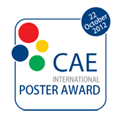
| |
EnginSoft - Conference Abstracts
EnginSoft International Conference 2010 |
Design of metamaterial based devices for electromagnetic applications |
Monorchio Agostino - University of Pisa (Italy) |
Abstract |
In the last decade great attention has been devoted to the study of Metamaterials. The electromagnetic properties of homogeneous materials arise from their microstructure and chemical composition. These properties, generally measured by their complex permittivity and permeability, dictate the response of the material to external electric and magnetic fields, respectively. Artificial electromagnetic materials are man-made composite structures exhibiting properties not found in natural bulk materials. The dimensions of the elementary building blocks or particles of such materials are electrically small with respect to the wavelength of the electromagnetic radiation with which they interact. For these reasons we commonly refer to these materials as metamaterials. Artificial impedance surfaces belong to a particular class of such artificial electromagnetic materials, being the structure bound to two dimensions. These surfaces can control the propagation or the boundary conditions of electromagnetic fields and are generally referred to as High Impedance Surfaces (HIS). The basic configuration of a HIS generally comprise an arrangement of metal elements on a periodic lattice, printed on a planar grounded dielectric slab. |
Back to index |



